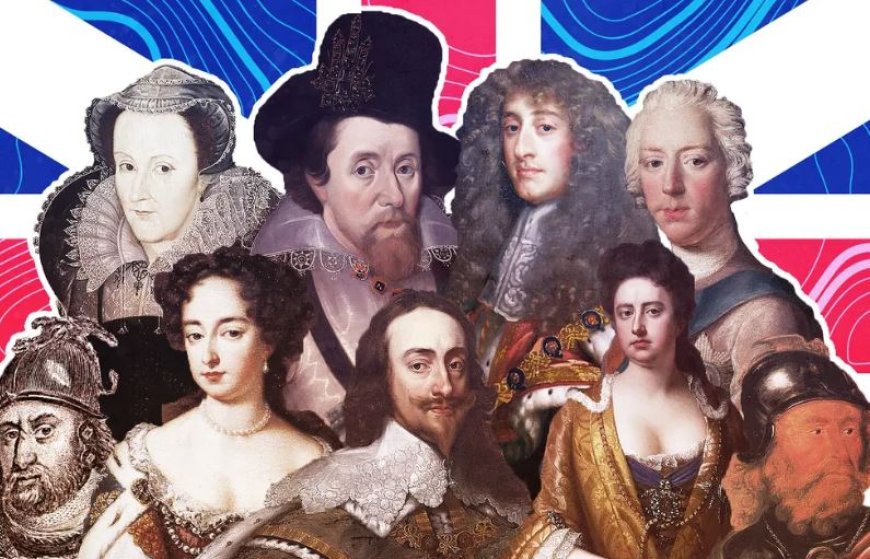The Historic Path to Scottish Independence
The Historic Path to Scottish Independence

The struggle for Scottish independence is a defining chapter in the struggle for self-determination and autonomy in the chronicles of history. This enduring pursuit has been shaped by political, cultural, and economic factors over the course of centuries, leaving an indelible imprint on the Scottish identity. Examining key events, influential figures, and the evolving aspirations of the Scottish people, this essay explores the rich tapestry of Scotland's historical journey towards independence.
The Initial Struggles
The desire for Scottish independence dates back to when the Kingdom of Scotland arose as a distinct political entity in the early Middle Ages. In the centuries that followed, Scotland struggled with its relationship with England, resulting in a number of conflicts and alliances. During the Wars of Scottish Independence in the 13th and 14th centuries, notable figures such as William Wallace and Robert the Bruce led a fierce opposition to English dominance.
The Union of Parliaments and Crowns
In 1603, King James VI of Scotland inherited the English throne, uniting the crowns of Scotland and England. This was the defining moment in Scotland's voyage towards independence. Scotland maintained its own legal and educational systems despite this union. In 1707, however, the Acts of Union were signed, combining the Scottish and English parliaments to create the United Kingdom. As economic benefits and political stability were measured against fears of cultural assimilation, the Scottish populace responded to this union with mixed feelings. Scotland experienced a cultural renaissance known as the Scottish Enlightenment in the 18th century. This intellectual movement, exemplified by figures such as Adam Smith, David Hume, and Robert Burns, stimulated a renewed sense of national identity and pride. The burgeoning Enlightenment ideas, which advocated for individual liberties and self-government, paved the way for future demands for Scottish independence.
The Development of Nationalism
Sociopolitical shifts and economic disparities contributed to a revival of Scottish nationalism in the 20th century. The establishment of the Scottish National Party (SNP) in 1934 marked a turning point, as it provided a unified platform for independence advocacy. The discovery of North Sea oil reserves in the 1970s fueled nationalist sentiment, with advocates arguing that Scotland's extensive natural resources could be utilized more effectively under independent governance.
Decentralization and the Path to Referendum
In 1999, Scotland's aspirations for greater autonomy were realized with the establishment of the Scottish Parliament, which marked a significant devolution of powers from Westminster. This devolved system gave Scotland control over a variety of policy areas, including education, health care, and justice. Nonetheless, it brought to light the inherent limitations of devolution and reignited the discussion regarding complete independence. The referendum conducted on September 18, 2014, marked a turning point in the recent history of Scottish independence. People in Scotland were given a binary option: to remain a part of the United Kingdom or to become an independent nation. 55.3 percent of electors ultimately chose to remain within the union, while 44.7 percent voted for independence. The referendum prompted passionate debates, with proponents of independence emphasizing Scotland's distinct political and cultural identity, and opponents emphasizing concerns over economic stability and potential unpredictability.
Continued Independence Advocacy
After the referendum of 2014, the Scottish independence movement remained vigorous and resilient. The 2016 Brexit referendum, in which Scotland voted decisively to remain in the European Union, widened the gap between Scottish and British political ambitions. Combined with perceived inadequacies in the administration of devolved powers and disagreements on issues such as fiscal policy and social welfare, this divergence prompted renewed demands for a second independence referendum. In the 21st century, the quest for Scottish independence continued to evolve, driven by shifting political landscapes and divergent views on governance. Following the 2014 referendum, where Scotland voted to remain part of the United Kingdom, the issue remained a topic of debate and contention. The Brexit referendum in 2016, where Scotland voted to remain in the European Union, further fueled calls for independence. The Scottish National Party (SNP), led by Nicola Sturgeon, advocated for a second independence referendum, citing the significant changes in the political and economic landscape since 2014. However, the decision to hold another referendum lies with the UK government, and discussions on the timing and conditions of such a vote have been ongoing. The COVID-19 pandemic and its impact on public health and the economy have also influenced the discourse surrounding independence. Proponents argue that an independent Scotland could shape its own response to crises, while opponents highlight potential challenges and uncertainties. As of now, the journey towards Scottish independence in the 21st century remains a complex and dynamic process, with divergent perspectives shaping the future trajectory.













































